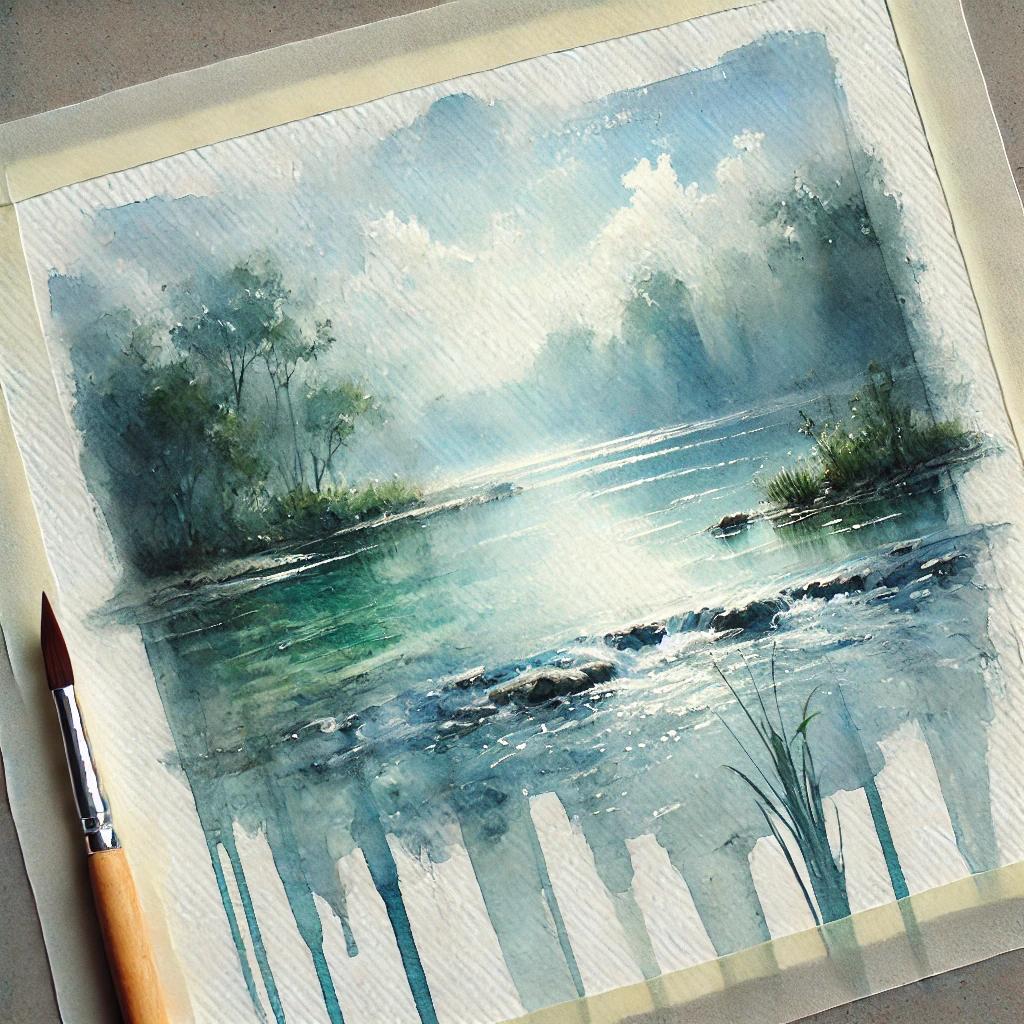Depicting water and the sea in watercolor is a demanding but highly rewarding process that relies on understanding the nature of water and mastering techniques that convey transparency, movement, and reflections. To paint water realistically, begin by observing its characteristics. Water is transparent, but its reflections and depths are influenced by light, shadow, and the surrounding environment. Use wet-on-wet techniques to create smooth color gradations that convey transparency and motion. Start with light washes for the base and add darker tones to suggest shadows and depth.
Reflections are a key element in realistic water depiction. Apply transparent watercolor layers to show the reflection of the sky, clouds, or surrounding objects on the water’s surface. For the sea, observe the texture of waves and use dry brush techniques to capture lines and highlights on the wave crests. For shading and depth, work with thin glazing layers using blues, greens, and dark tones to add volume and realism.
Choosing the right paper is crucial for capturing water’s details and textures. Opt for medium-textured, high-absorbency paper for better control of gradations. Practice is essential for mastering color flow and balancing light and shadow, which will bring the surface of the water and sea to life. With careful observation and correct technique application, watercolor can convey the impressive beauty of water with unique sensitivity.
When painting water and the sea in watercolor, the brushes you use play a vital role in conveying movement, reflections, and texture. Selecting the right type and size depends on the desired result and the techniques you are applying.
Natural hair brushes, such as squirrel or Kolinsky sable, are excellent for wet-on-wet techniques. They hold large amounts of water and allow for smooth color gradations—perfect for capturing transparency and depth. For the base layers, medium-sized brushes (such as #8 to #12) are ideal for covering large areas evenly. For more detailed work, like reflections, smaller sizes (#4 or #6) are more suitable.
Flat brushes are useful for painting reflections on the water’s surface, as they can create clean, controlled lines. Use medium sizes for main reflections and smaller ones for finer details.
For wave lines and patterns, a fan brush is excellent. It allows you to create textures and organic lines that depict water movement. These brushes are particularly effective when working with the dry brush technique.
Using a variety of brushes—from large ones for base washes to smaller ones for details—enables you to realistically render the texture and dynamism of water and the sea. Practicing with different sizes and techniques will help you fully exploit their potential.






